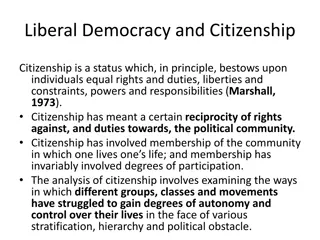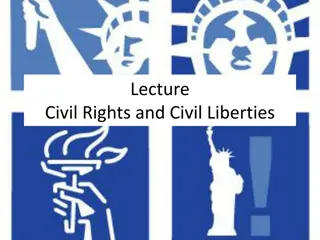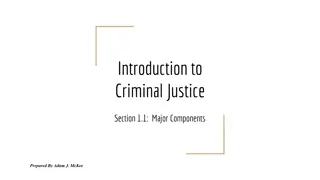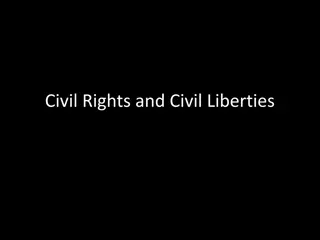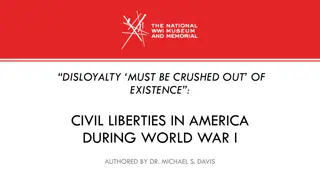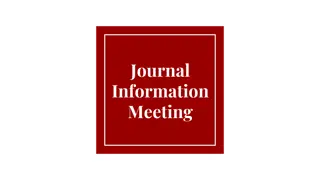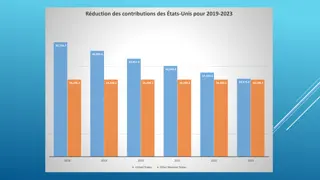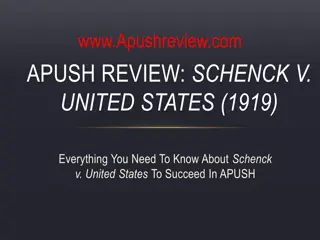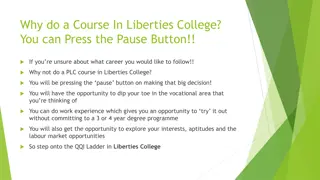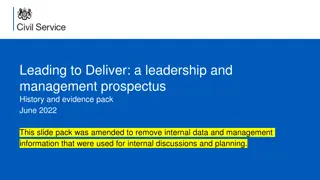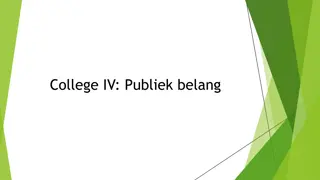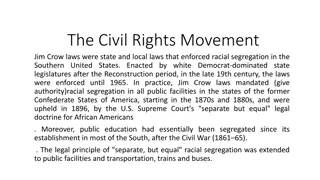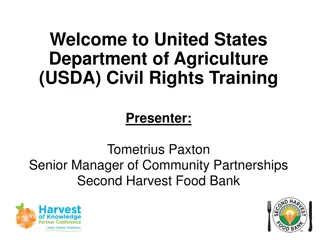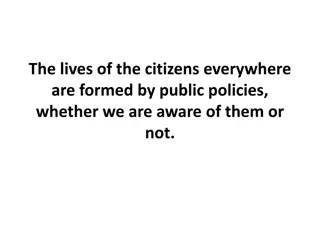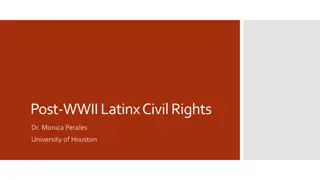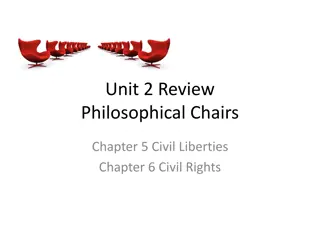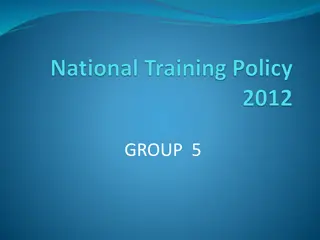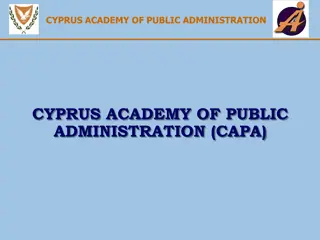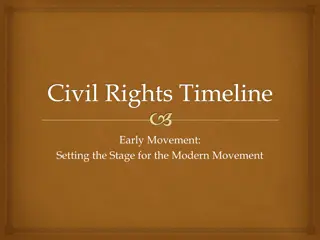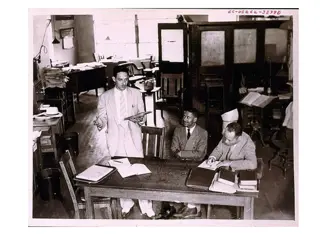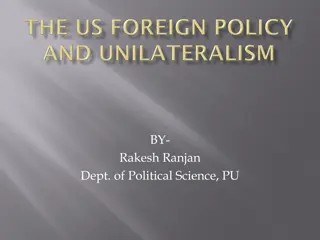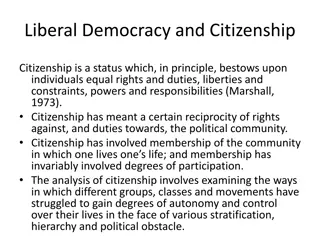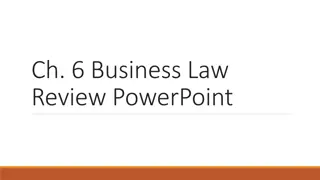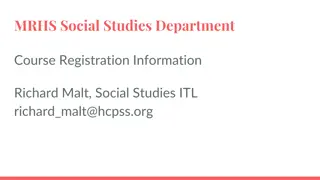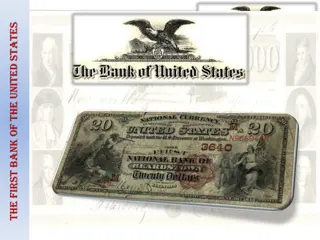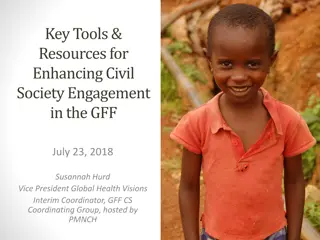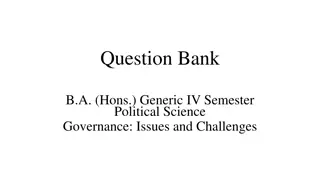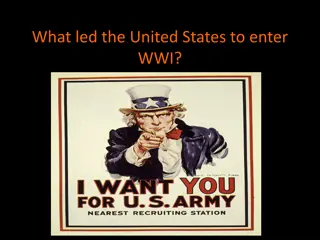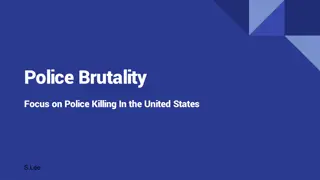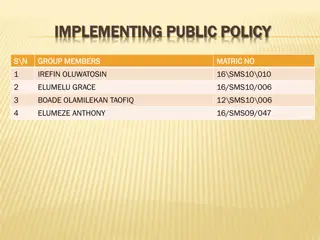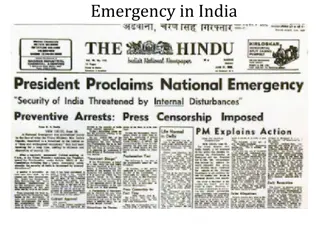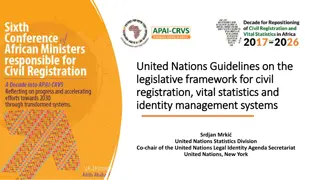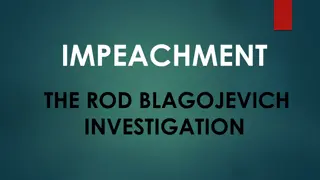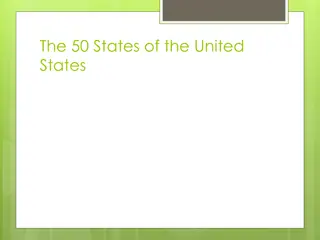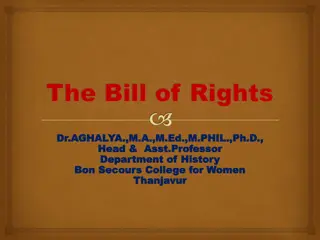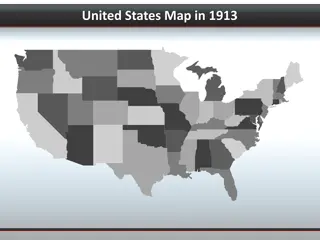Exploring Civil Liberties and Public Policy in the United States
The discussion delves into the evolution of civil liberties and public policy in the United States, focusing on the Bill of Rights, the incorporation doctrine, freedom of religion, and freedom of expression. It examines key court cases and constitutional principles that shape the legal protections against the government and the balance between individual rights and societal interests.
Download Presentation

Please find below an Image/Link to download the presentation.
The content on the website is provided AS IS for your information and personal use only. It may not be sold, licensed, or shared on other websites without obtaining consent from the author. Download presentation by click this link. If you encounter any issues during the download, it is possible that the publisher has removed the file from their server.
E N D
Presentation Transcript
CIVIL LIBERTIES AND PUBLIC POLICY
I. Bill of rights-then and now A. Civil liberties- are legal protections against the government and are essential to democracy 1) Set down in our bill of rights 2) Were a condition of ratification Passed at a period of bitterness 3) B. Bill of rights passed to restrict the powers of the new central government. But questions arose as to whom they restricted
Questions arose? In Barron versus Baltimore (1833) the Court ruled Bill of rights only restrained national government and not states and cities But the incorporation doctrine provided the rationale to use the 14thamendment to apply fundamental freedoms to state actions Gitlow versus New York (1925)- first use of the 14th amendment saying 1stamendment rights could not be impaired by the states
Freedom of Religion First Amendment- Makes two statements about religion and government: 1) Establishment clause: A) Congress shall make no law respecting the establishment of religion Translation-NO NATIONAL CHURCH and SEPARATE CHURCH AND STATE Cases: Lemon v Kurtzman (1971) ; Engel v Vitale (1962); Westside community Schools v Mergens (1990); School District of Abington Township, Pennsylvania v Schempp (1963)
Freedom of Religion 2) Free Exercise Clause Sometimes clashes with society ideas. Can you think of some? Supreme Court has consistently maintained that people have the abs0lute right to believe whatever they want Case: Wisconsin v Yoder (1972); Boerne v Flores (1997)
Freedom of Expression? Does no law in the 1stamendment really mean no law ? Is freedom of expression absolute? A) SCJ Hugo Black said yes-no laws to permit it B)Courts have ruled that sometimes speech needs to be controlled- (Yelling FIRE in a crowded room) C) Balance created between free expression and competing values like order, national security and fair trials D) Also decided what constituted speech and therefore protected by the 1st: 1(Nonverbal like pickets are symbolic speech
Prior Restraint? Is the ability of a government to prevent material from being published. Supreme Court has generally struck this down (Near v Minnesota (1931)) Hazelwood School District v Kuhlmeier (1988) court said school officials could regulate a school newspaper since it was not a public forum For national security?- Court reluctant to issue injunctions (New York Times v United States (1971) prohibiting Vietnam documents from being printed)
Free Speech and Public Order War often brings government efforts to enforce censorship A) Schenck v United States (1919) Clear and present danger can limit speech B) Smith Act of 1940 forbade the advocacy of violent overthrow of the government C) McCarthyism caused restrictions on freedom of speech TODAY, COURTS ARE VERY SUPPORTIVE OF THE RIGHT TO PROTEST, PASS OUT LEAFLETS OR GATHER SIGNATURES
Free Press and Free Trial Bill of rights tries to guarantee both Media can make this very difficult because journalists: 1) Argue the public has the right to know 2) At same time they want to protect sources 3) Have shield laws in some states Supreme Court has held that the right to free trial preempts reporters rights to protect sources. (Zurcherv Stanford Daily 1976)
Obscenity and its Definition Has perplexed the courts because: 1) Standards vary 2) Obscenity or art 3) No nationwide concensus 4) Porn degrading women? 5) States may protect kids form the same materials adults have legal access to 6) Supreme Court has said obscenity not protected expression (Roth v US 1957)
Miller v California 1973 Court ruled and CJ Warren Berger wrote: Items are obscene if taken as a whole appealed to purest interest in sex, had offensive sexual content or lacked in artistic, literary, political or scientific merit THAT HELPS!! NOT!!!
Libel and Slander Libel- published falsehoods about a person Slander- spoken falsehoods Both causing damage (defamation) Two types and how court has ruled: 1)Public individuals- libelous if statements are made with mailce and disregard for truth (New York Times v Sullivan 1964) 2) You and me- only need to prove defamatory statements were made and author was negligent
Symbolic Speech Actions that do not consist of speaking or writing but express an opinion Broadly interpreted, freedom of speech is a guarantee of freedom of expression Doctrine of symbolic speech is not precise: burning a flag is protected speech but burning a draft card is not (Texas v Johnson 1989; US v O Brien 1968)
Commercial Speech Such as advertising is more restricted than are expressions of religion, politics or other matters FTC (Federal Trade Commission)- decides what kinds of materials may be advertised on radio and TV Although more restricted, the times are changing to provide more protection for this expression. (ie. Condom ads?) Radio and TV is more restricted than the print media FCC- (Federal Communications Commission) regulates what content is on radio and TV-HOWARD STERN? TITANIC? Licensed stations must comply to operate
Freedom of Assembly Two facets: 1) Right to assemble if: A) within reasonable limits (time, place and manner) B) on public property (stay off my lawn) C) Does not border on harassment 2) Right to associate: A) gather with people with a common interest to create political change B) 1958 SC found that requiring the NAACP to turn over its membership list to the state of Alabama was a violation of this provision. (NAACP v Alabama)
Rights of the Accused The 1stamendment guarantees the freedoms of religion, speech, press and assembly Most of the other rights in the Bill of Rights deal with the rights of people accused of crimes These rights originally intended to protect the accused in political arrests and trials Today the 4th, 5th, 6thand 8thare primarily applied to criminal cases Generally vague Bill of Rights have been applied to the states as well through the incorporation doctrine
4thAmendment Forbids unreasonable searches and seizures 1) No court may issue a search warrant without probable cause 2) Warrants must say where is to be searched and what they are looking to find Since 1914 courts have used the exclusionary rule to prevent illegally seized evidence from being admitted in court 1) In Mapp v Ohio (1961) the SC used incorporation to apply the exclusionary rule to states as well 2) Critics say criminals getting off on technicalities 3) Supporters say rules and protections of the Constitution are the rules Warren court made exceptions ot the Exclusionary Rule by allowing warrantless searches if probable cause existed
5thAmendment Prohibits forced self-incrimination Suspects can t be forced to give evidence that can be used against them because: a) Burden of proof on prosecution b) Right applies in all places not just court rooms c) But defendants must testify if granted immunity Miranda v Arizona (1966) Rights to remain silent, things said can be used against them, right to an attorney Again, Justice Berger made exceptions in saying Miranda right violations not always set in stone if other evidence does exist
6thAmendment- Part I Right to Counsel Meant in federal courts and not incorporated until recently Progress: 1) 1932 SC ordered states to provide an attorney for indigent accused of a capital crime ( Powell v Alabama) 2) 1963 the court extended the same right to everyone accused of a felony (Gideon v Wainwright only after a paupers petition was written by Gideon) 3) Later ruled a lawyer must be appointed whenever imprisonment could be imposed (Argersinger v Hamlin, 1972)
6thAmendment- Part II Right to Speedy Trial and Impartial Jury Most cases settled through plea bargains which are fast and cheap Opponents say deserving criminals don t get the punishment they should Size of jury not set by document but by custom is usually 12
8th Amendment Protection against cruel and unusual punishment but does not define it. Death penalty at the center: Witherspoon v Illinois (1968)- overturned death sentence due to leaving out opponents of death penalty from jury Furman v Georgia (1972) overturned GA death penalty because of the way it was applied Gregg v Georgia (1976)- only for extreme crimes McClesky v Kemp (1987) upheld against charges of 14th amendment equal protection for minorities Court recently held it is okay to execute 16 and 17 year old as well as retarded people


